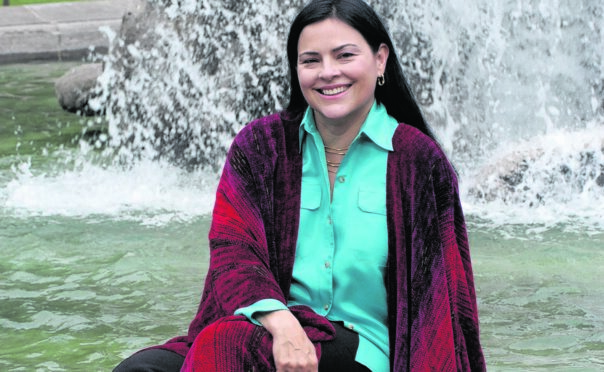American author Diana Gabaldon has captured the hearts and minds of millions of readers with her critically-acclaimed romantic and time-travelling Outlander novels.
She has now released a beautifully-illustrated compendium, which opens a door through the standing stones to the magical world that lies within and presents the Gabaldon theory of time travel. Here, she tells the answers to some of her most frequently asked questions.
Have you ever been to Scotland?
I had never been there when I wrote Outlander, and did that book entirely from library research. I did take part of the advance money from the sale of Outlander and go to Scotland while working on Dragonfly. It was (luckily?) just as I’d been imagining it. I’ve been back several times since, for book tours and the like, and would go back like a shot at the slightest opportunity.
Where did you get the idea for a time traveller novel?
I had meant Outlander to be a straight historical novel, but when I introduced Claire Beauchamp Randall, she wouldn’t co-operate. Dougal asked her who she was and, without my stopping to think who she should be, she drew herself up, stared belligerently at him and said: “Claire Elizabeth Beauchamp. And who the hell are you?”
She promptly took over the story and began telling it herself, making smart-ass modern remarks about everything. At this point, I shrugged and said, fine. Nobody’s ever going to see this book, so it doesn’t matter what bizarre thing I do – go ahead and be modern and I’ll figure out how you go there later. So the time travel was entirely Claire’s fault.
Are you Claire?
Well, no. Although, of course, I’m all the characters; I have to be, after all. But if you are asking whether I based the character of Claire on myself, no I didn’t.
How long does it take you to write a book?
It took me 18 months to finish Outlander, about two years each for Dragonfly in Amber and Voyager, and roughly two and a half years for Drums of Autumn. The
books got longer, and slightly more complicated. Also, I spent more than four months on the road, doing book tours and promotional appearances for Voyager, which tends to cut into the writing time.
I’m extremely slow and snail-like and I rewrite and edit as I go, word by word, sentence by sentence, then go back and change the words again. I average maybe two to three pages a day, except at the very end of the book. At this point, when I know what I’m doing and where everything goes, I will be writing 10 to 15 pages a day and sleeping very little.
Where will the story end – Will it have a happy ending?
I think the Outlander books will end in about 1800 in Scotland. If this tells you anything, more power to you. The last book will have a happy ending, although I confidently expect it to leave the readers in floods of tears anyway.
Diana Gabaldon, The Outlandish Companion, Volume 1, is published by Century and priced at £25 for a hardbook. It’s also available as an ebook.
